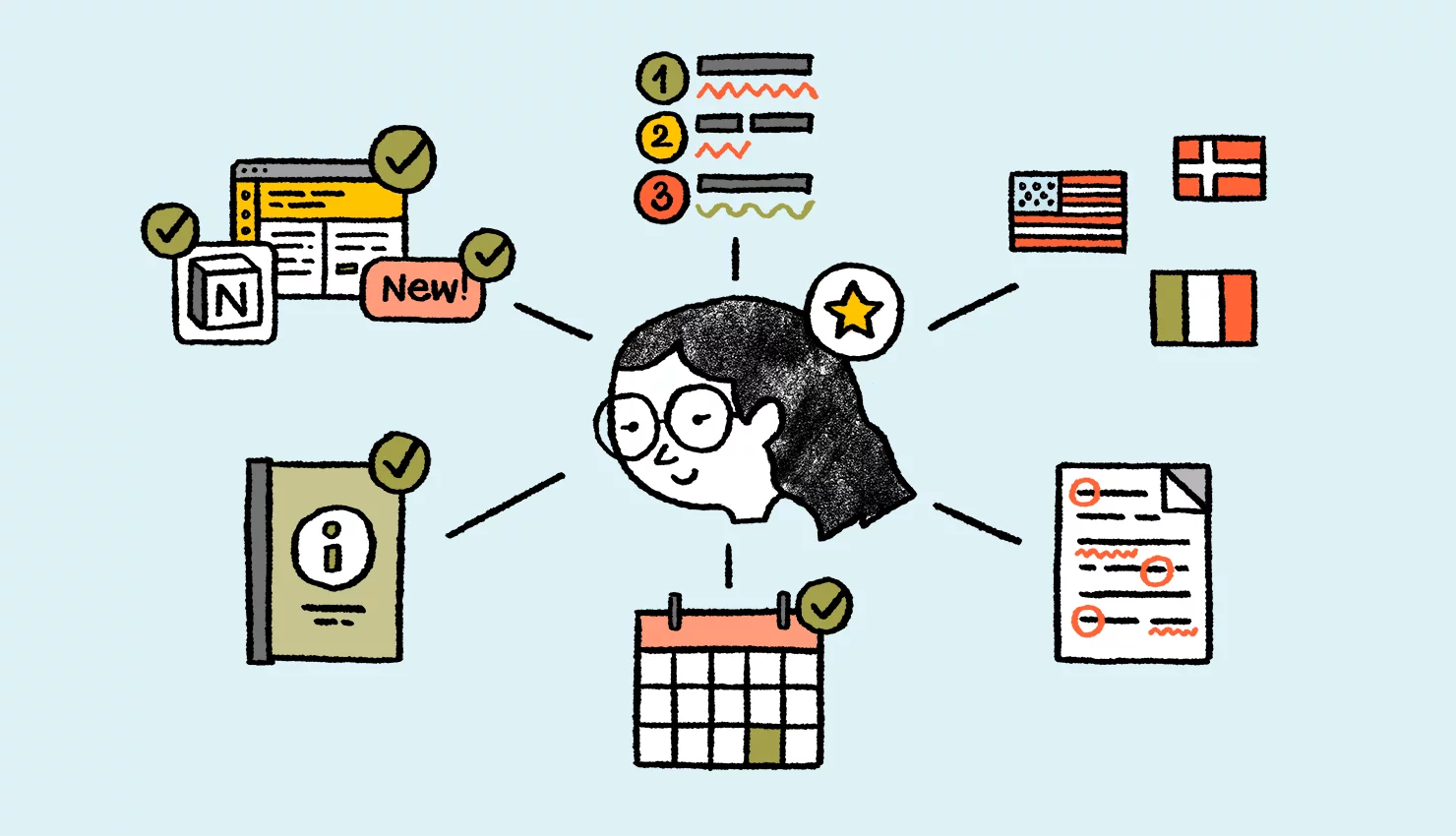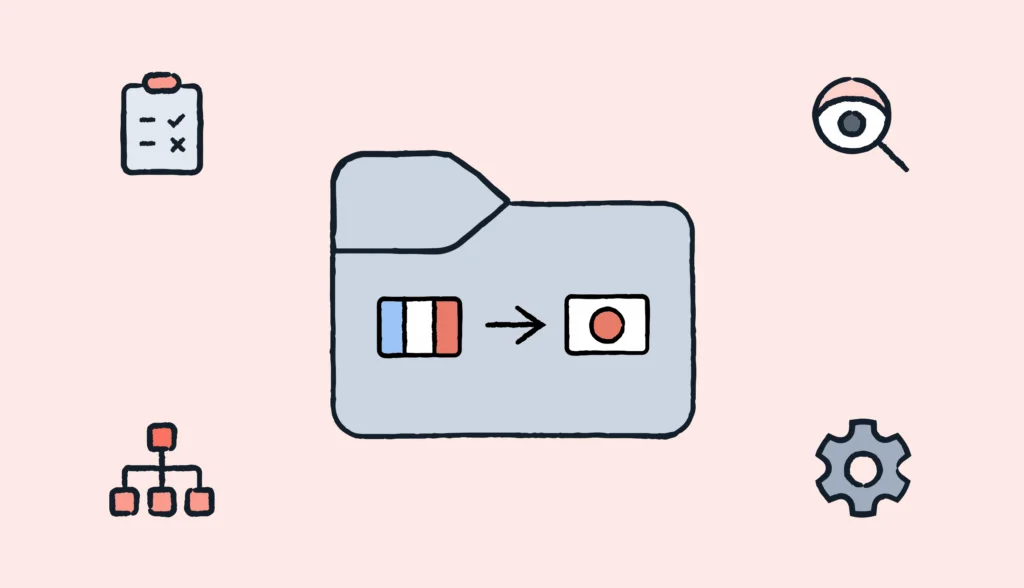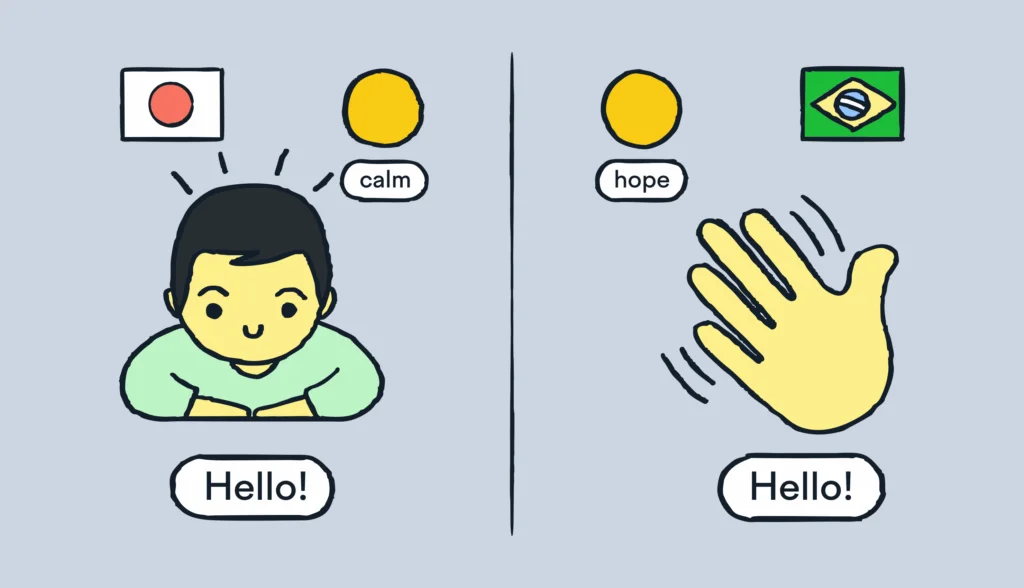Robust localization workflows include rigorous quality assurance testing (QA). If you plan to scale your business for multiple markets by localizing your product, support documentation, website copy, blog posts, and other content, you’ll need to ensure that translations meet the same quality standards as content written in your native language.
Take a blog post, for example. Suppose the article’s goal is to showcase your thought leadership on an important topic to your business. In that case, you likely won’t build any brand trust with a piece riddled with grammatical errors or nonsensical phrasing. Similarly, a translation may be technically correct but lack the style or branding that matters.
This is where a localization QA tester comes in. Just like with any type of recruitment, hiring a localization QA tester can be quite challenging, especially if you don’t have much experience with niche recruiting.
This guide should help you get a clearer idea about what to pay attention to when it comes to both sourcing, evaluating, and hiring a localization QA tester.
What does a localization QA tester do?
Localization QA testers are an integral part of any localization workflow. In addition to automated QA checks performed by your TMS tool – for example, inconsistent placeholders, leading/trailing whitespace, or errors in numbers — QA professionals use the live preview on mobile device screens or browsers and in-context editors to ensure quality standards are met and everything’s in order.
Once everything has been completed (e.g., images, text, and layout), testers see the entire picture, making sure everything makes sense both culturally and contextually. That way, even if multiple translators work with individual strings, a tester can pull everything together to see how each element works with one another. This includes:
- Linguistics: Double checking translation accuracy, checking for consistency and style, and any copy/paste errors that inevitably pop up in the handoff between translation and engineering
- Appearance: Evaluating images, matching new layouts with the source material, mobile/desktop views, formatting, and catching any misplaced or corrupted characters
- Function: Checking links, tracking, and product behavior, such as filling out forms, buttons, and triggering error messages
Often the most overlooked aspect of a project, quality assurance can genuinely make or break the success of your localization efforts, from evaluating the internationalization elements and assessing software functionality to modifying linguistic flow.
Localization involves different stakeholders, from design and product to engineering. Each touchpoint is an opportunity for introduced errors — and even the best teams don’t always get it perfect every time.
The profile of a successful localization QA tester
Localization testing ensures that every translation project meets the standards set forth by the product manager. This is so that every customer and partner interaction can achieve their business goals, regardless of the market.
Successful testers possess a few essential skills:
- They have excellent linguistic skills and are fluent in at least one source language and target languages — in many cases, including English, with excellent spelling, grammar, and proofreading skills.
- They are detail-oriented and highly organized problem solvers and can spot patterns in errors or changes quickly and easily.
- They have excellent communication skills and can follow style guidelines and documentation to ensure consistency.
- They can track, analyze, and prioritize bugs and fixes that need immediate attention versus those that are nice to fix.
- They are technologically-minded and comfortable learning new platforms, software, and tools.
- They can work quickly under tight deadlines and clearly communicate issues to other team members, such as the localization project manager, to replicate and fix.
- They’re flexible and adaptable, able to multitask and work in a fast-paced, changing environment.
- They work well independently and within a team environment, especially within a global, culturally-minded team.
But as many QA testers know, a job description only tells part of the story when it comes to executing complex localization projects. What does detail-oriented, tech-savvy, or analytical look like in practice?
How to hire the best localization QA tester
A job search is just as much a try-out for your company as it is for the candidate. While you may want to start with a freelancer, to truly scale your business, you’ll need competent, full-time or part-time QA testers that understand how to maintain and manage the quality of your localization efforts, particularly with cultural nuances.
Localization quality assurance testers make, on average, $55,030 in the United States, according to Glassdoor. Here’s what you’ll need to find the right fit:
Write a detailed job description
Your job description should include an overview of your company, your team, and how this individual’s responsibilities will fit into your larger localization and product workflow. Note any specific development processes you already use, such as agile or scrum, and any relevant pieces of technology, such as your TMS tool.
Then include information about responsibilities such as the following:
- Create and validate functional tests for localization projects.
- Write test scripts and manage the testing process from start to finish.
- Test, track, and analyze localization errors and bugs.
- Identify performance metrics and build weekly reports on quality and performance.
- Communicate issues to team members, providing clear and concise feedback.
- Serve as a linguistic backup for your language.
- Document translation process, workflow, and linguistic needs, perhaps in a glossary.
Don’t forget to include information about the skills, tools, and the process — such as which specific teams this person will work with, the title of who they report to, and why the role matters to the organization.
Most importantly, include the relevant languages required for the position. If you’re using one job description for multiple hires, be sure to list them with language such as, “Must be fluent or native speakers in one or more of the following languages: English, Spanish, Arabic, Finnish, Portuguese…
Plan the right localization QA tester interview questions
Every interview is different. You’ll likely want to put candidates through a technical test and a language test, in addition to asking qualitative questions about their approach to the role. Consider questions that hit on their approach to collaboration, their analytical mindset, and their ability to adapt to change.
Common questions you might want to ask include:
- Are you a native speaker? If not, how do you maintain your language skills?
- Do you consider yourself a linguist? What languages do you know and how many?
- Tell me about a time you disagreed with a colleague. How did you resolve it?
- What does quality mean to you?
- What are the most common errors you’ve seen with localization in the past?
- Tell me about a recent project you’re proud of.
- What’s a new piece of technology you’ve worked with recently, and how did you learn it?
- Tell me about a time you had competing priorities. Which one won, and why?
It’s also a good idea to have a dummy site/web app (source & target) with some known issues. Then you can ask the applicant to test it and try to reveal as many issues as possible, and create an elaborate report on their findings. This way, you can directly compare the performance of the candidates.
Watch out for red flags
Besides common hiring red flags, such as missed appointments, disinterest in the role, or a disheveled appearance, you’ll want to make sure to test for language fluency and technical know-how. The foundation of a successful localization QA tester is the language they work in and their ability to test software on various platforms.
Without those skills, you won’t have a successful hire.
How Lokalise helps QA specialists
Lokalise offers automated, built-in, and configurable QA checks to speed up the translation process. When changes do need to be made, in-context editing gives reviewers the option to view new files and make edits directly.
Lokalise’s customers report up to 37% shorter development release cycle and eight times faster translation delivery — with fewer errors. Try Lokalise for free or book a demo with our product specialists to explore how to make the most of your localization software.





